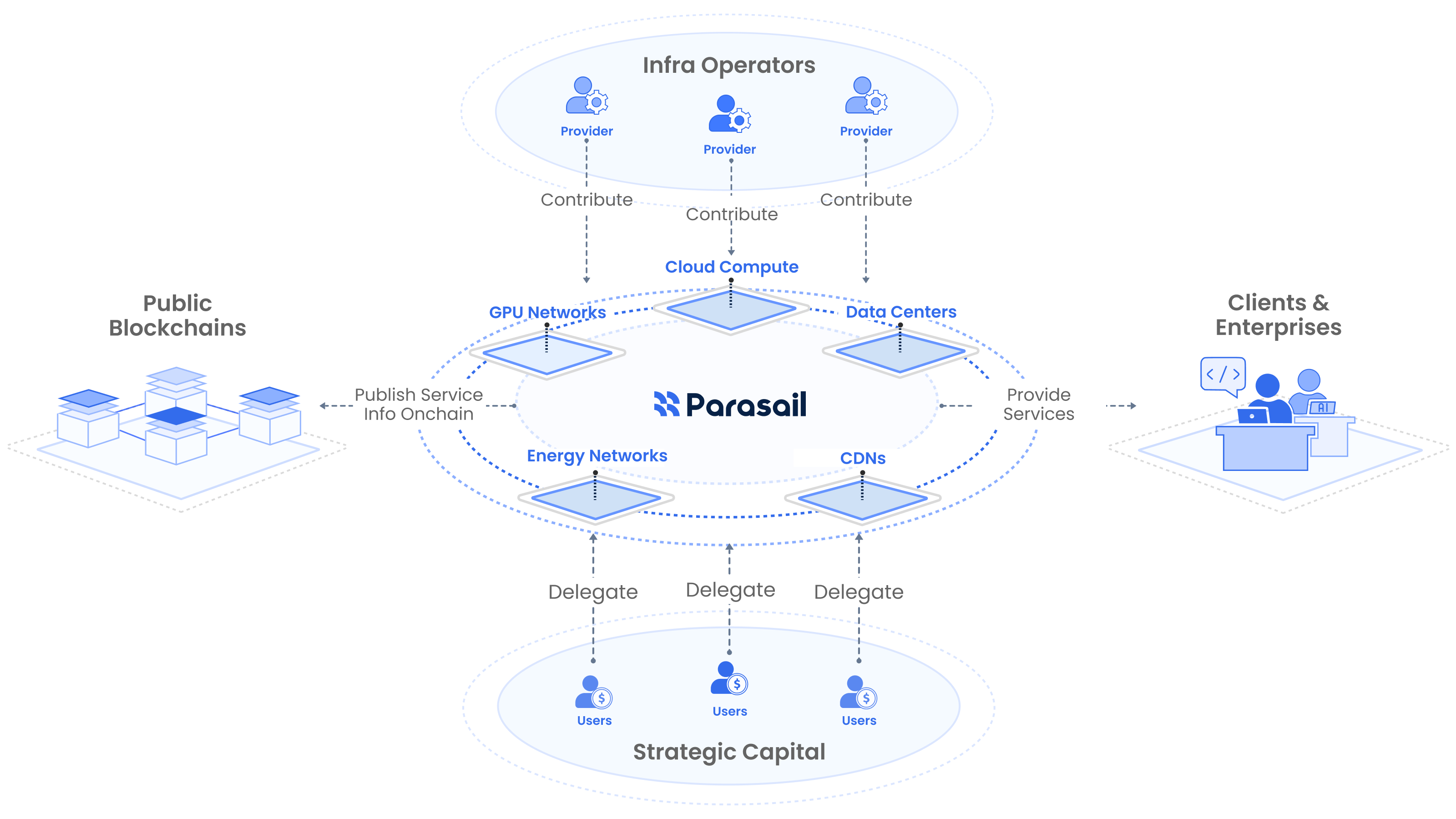How does Parasail work?
Parasail's protocol creates a transparent, self-sustaining ecosystem where all participants are aligned for long-term growth and reliability. It coordinates four key groups through a simple, onchain mechanical loop.

Ecosystem Participants
- Clients & Enterprises: The end-users who pay for and consume the decentralized services offered by the infrastructure projects, driving real revenue into the ecosystem.
- Infra Operators: The network of service providers who contribute the essential resources—like compute, storage, or bandwidth—that power the infrastructure projects.
- Strategic Capital: Token holders and investors who delegate their funds to infra projects. This capital is crucial for provider operations, R&D, and revenue growth, and in return, these participants earn a share of the network's success.
- Public Blockchains: The foundational trust layer of the ecosystem. Blockchains are used to transparently record service information and revenue streams, and they provide a venue for broader DeFi integration and liquidity.
Core Protocol Mechanics
The economic activity within Parasail follows a clear, four-step, onchain process:
- Delegate & Pool: Strategic Capital participants stake assets into Parasail's efficient delegation pools. This pooled capital becomes available to Infra Operators, acting as a performance bond that secures the network.
- Allocate & Monitor: Funds are allocated to Infra Operators as collateral, which is directly tied to their performance against Service Level Agreements (SLAs), such as 99.9% uptime. The protocol's nodes continuously monitor and validate this performance onchain.
- Service Enforcement: If an Infra Operator underperforms or fails to meet their SLA commitments, a portion of their collateral is forfeited through an automated process. This service enforcement mechanism protects the network's integrity and can be used to compensate affected users or reward high-performing operators.
- Reward and Revenue Sharing: Clients & Enterprises pay fees for services, generating real network revenue. This revenue is then distributed among Strategic Capital participants, Infra Operators, and other contributors based on onchain rules, creating a transparent reward and revenue sharing model.
On-Chain Transparency: Every component of this cycle—from SLA terms and provider performance metrics to enforcement actions and reward distributions—is publicly verifiable on the blockchain. This creates a fully transparent and trustless environment for all participants.
Business Model
Parasail is designed to be economically sustainable by capturing a small percentage of the value it coordinates.
Revenue Streams:
- Reward and Revenue Sharing: The protocol receives a percentage of the revenue generated by infra projects and providers who leverage the strategic capital delegated through Parasail.
- Transaction Fees: A small percentage of fees from specific transactions occurring within the protocol.
Value Distribution (Costs): The protocol's primary "cost" is its core function: distributing value back to the network participants. The majority of revenue generated is paid out as rewards to active participants, such as Strategic Capital providers and Infra Operators, for their contributions to securing and growing the ecosystem.